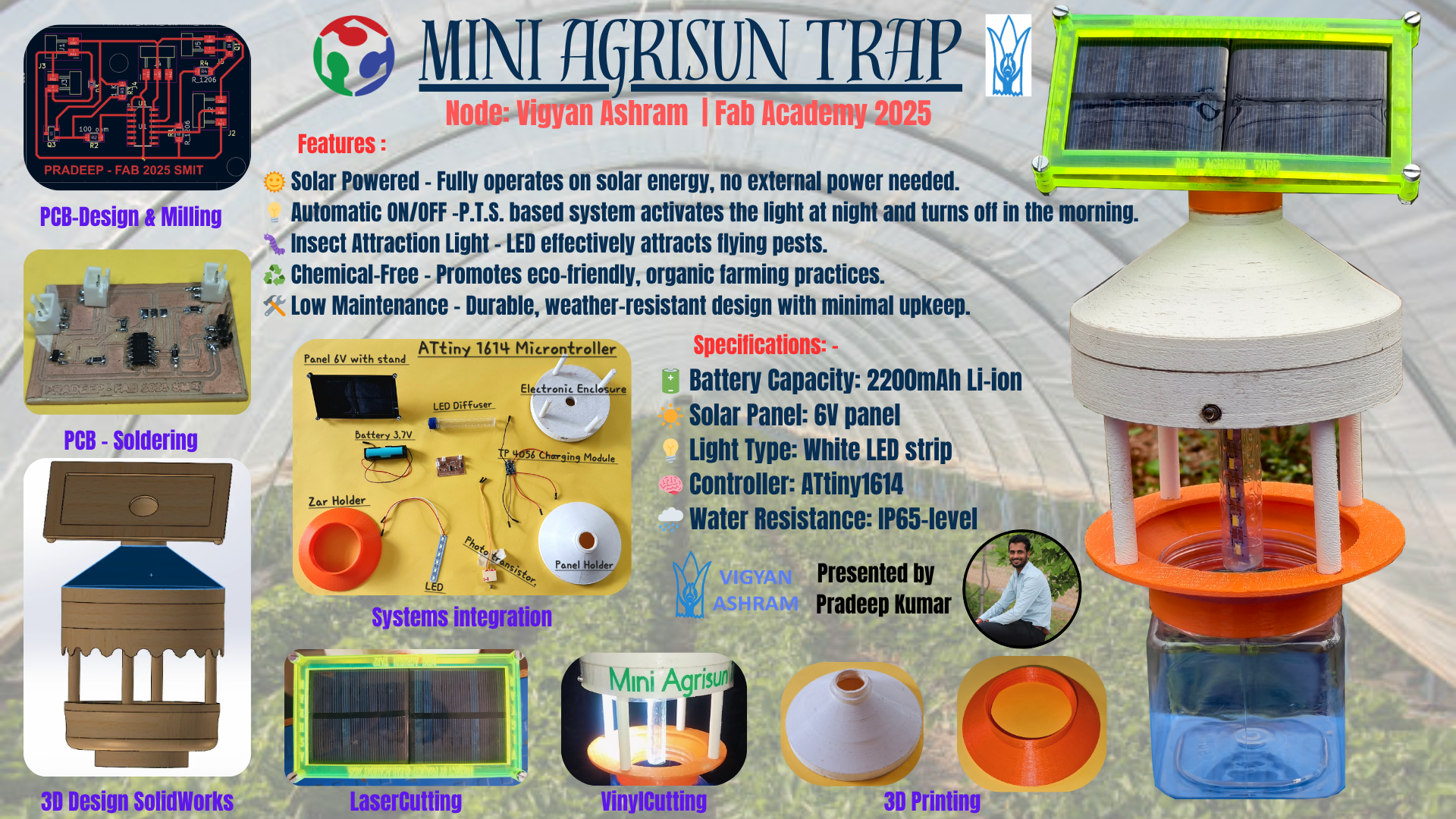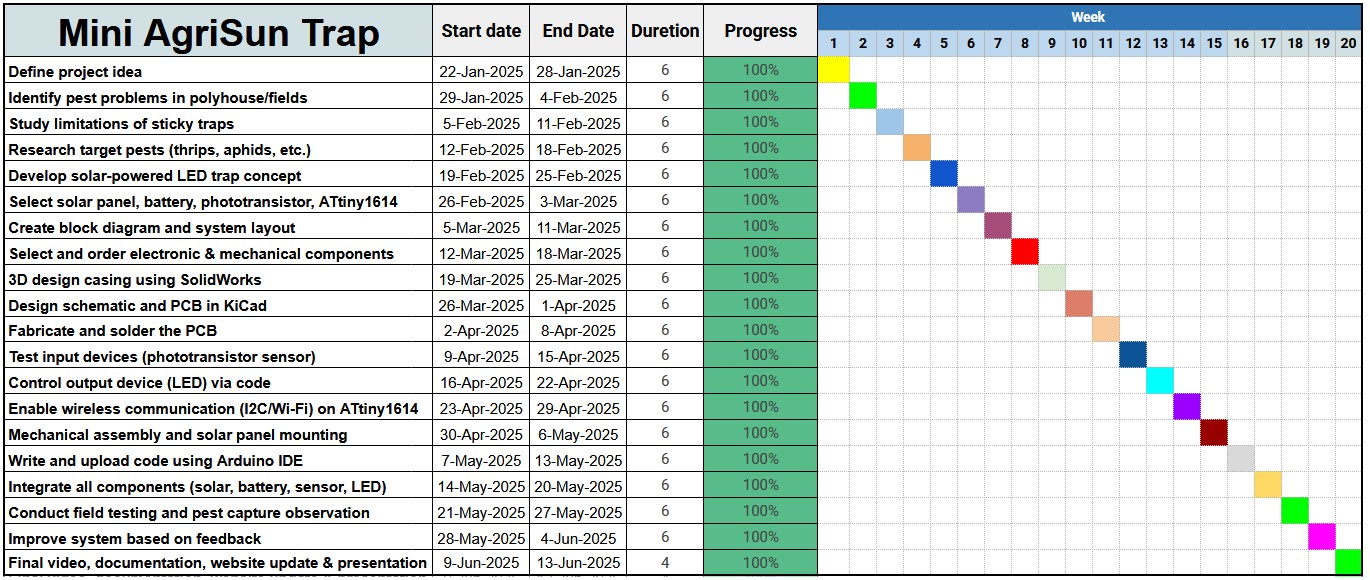 FAB Academy 2025
FAB Academy 2025


Throughout this project, I developed practical skills in designing and integrating solar-powered electronics with mechanical components. I gained hands-on experience with PCB design, microcontroller programming, and 3D fabrication. Managing the project timeline taught me valuable planning and troubleshooting techniques. Additionally, I learned how to document and share my work effectively to benefit the community.